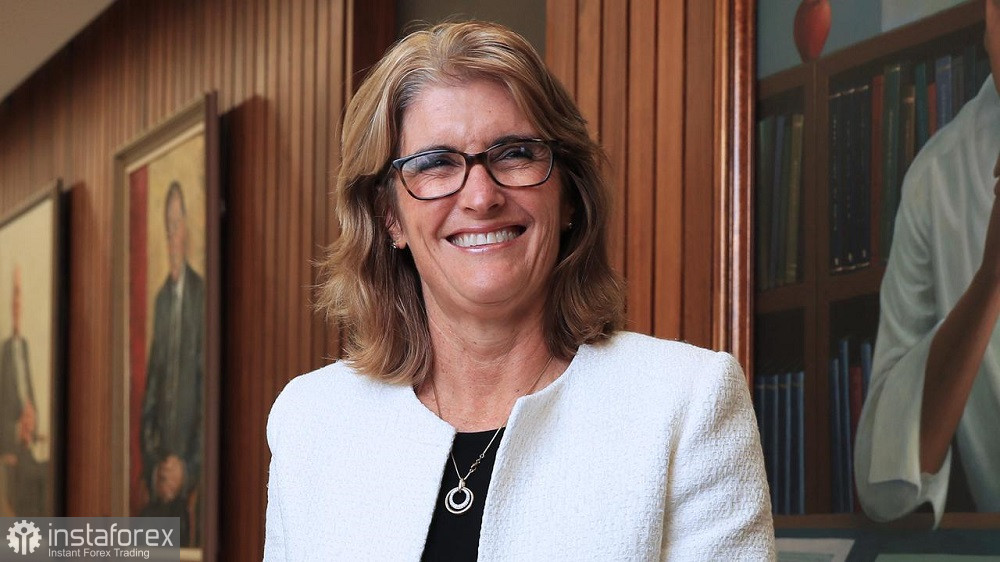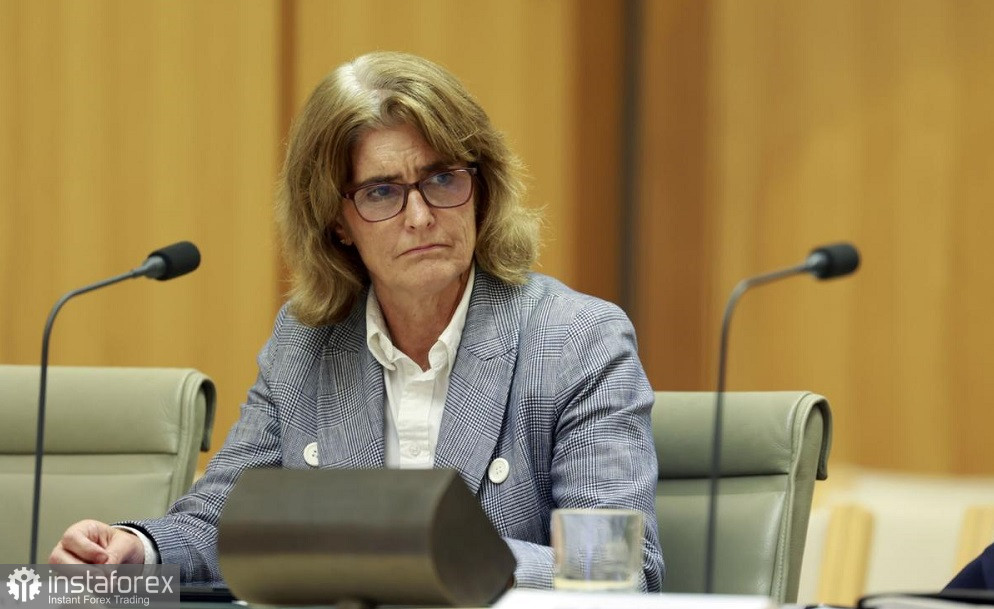The August meeting of the Reserve Bank of Australia will be the second-to-last meeting under the leadership of Philip Lowe. In the past, there have already been rumors that he would not be reappointed for a second term. And now rumors intensify after media outlets have publishing corresponding reports indicating that the current head of the central bank has "no chance" of remaining in the position of RBA governor. Take note that Lowe took office as governor on September 18, 2016, succeeding Glenn Stevens (he had previously served as Deputy Governor under Stevens since 2012). Accordingly, his term as governor will expire in two months, in September of the current year.

Responding to the media frenzy, the Prime Minister of Australia, Anthony Albanese, and the Treasurer, Jim Chalmers, called an emergency press conference on Friday in which they confirmed the rumors of Lowe's imminent resignation and announced the name of his successor. Michelle Bullock, who is currently the Deputy Governor of the RBA, has been named as the new governor of the central bank.
Although Bullock has already stated her readiness to achieve the RBA's stated policy and operational objectives (expressing her commitment to the current course), the news of her appointment exerted some pressure on the AUD/USD pair. After a three-day rapid growth towards the 0.69 level, the pair retraced back to the 0.6850 level. It seems that some of Bullock's previous remarks did not sit well with AUD/USD buyers, characterizing her as more of a "moderate centrist." In particular, she supported the pause in rate hikes in April, emphasizing that the RBA "would have paused on rates even without the global banking stress." In one of her recent speeches, she also said that "the RBA is willing to accept a more gradual approach to getting inflation to the target level than many other central banks."
In other words, she is not a maximalist or a "hardline hawk." But in my opinion, AUD/USD traders may have rushed to conclusions and put pressure on the aussie prematurely. After all, Bullock is the alter ego of the current RBA governor. Her statements have never contradicted Lowe's statements or positions, and overall, she has always supported his policy. Undoubtedly, as the head of the RBA, Bullock may show a slightly different side of herself than when she was a deputy, but experts don't expect any radical changes.
It is also worth noting that Bullock's appointment will take effect on September 18, 2023, meaning that the August and September RBA meetings will still be under Lowe's leadership. It will only be in early November that his successor will take the helm of the central bank. However, by that time, the fundamental backdrop for the AUD/USD pair will significantly change, so it is not constructive to assess her previous statements in the context of possible RBA decisions at the end of the year. Moreover, the market, for the most part, does not think in such broad time categories.
Furthermore, Bullock is definitely not a "dove." The allegory of a "cautious hawk" is more appropriate here. For example, in one of her recent interviews, she stated that rate hikes are the only tool the RBA has to contain inflation. I believe additional comments are unnecessary in this regard.

Therefore, the current decline in the AUD/USD exchange rate is more of an emotional response. In addition, there is the infamous "Friday factor," which has a special nature under the current circumstances. As we all know, the US dollar weakened across the market this week in response to the US inflation report. In particular, the AUD/USD pair rose more than 200 pips in a few days, approaching the 0.69 level. However, during Friday's US trading session, sellers took the initiative. This happened for two reasons. Firstly, buyers failed to test the resistance level at 0.69 (the upper line of the Bollinger Bands indicator on the 1D chart) despite the impulsive price growth. Secondly, AUD/USD traders seem to be taking profits on their long positions after three days of nearly uninterrupted growth. In such conditions, opening new trading positions carries risks.
However, overall, the pair maintains a bullish sentiment primarily due to the weakening of the US currency amid reduced hawkish expectations regarding the Federal Reserve's future actions (after the July meeting).
The "technicals" also support a preference for long positions in the AUD/USD pair. On the daily chart, the pair is trading between the middle and upper lines of the Bollinger Bands indicator. In addition, the Ichimoku indicator has formed one of its strongest bullish signals, the "Parade of Lines." The bulls' nearest target is the 0.69 level, which corresponds to the upper line of the Bollinger Bands indicator on the 1D chart. The next price barrier is the 0.6950 target, which is the upper band of the Kumo cloud on the weekly chart.
 English
English 
 Русский
Русский Bahasa Indonesia
Bahasa Indonesia Bahasa Malay
Bahasa Malay ไทย
ไทย Español
Español Deutsch
Deutsch Български
Български Français
Français Tiếng Việt
Tiếng Việt 中文
中文 বাংলা
বাংলা हिन्दी
हिन्दी Čeština
Čeština Українська
Українська Română
Română

